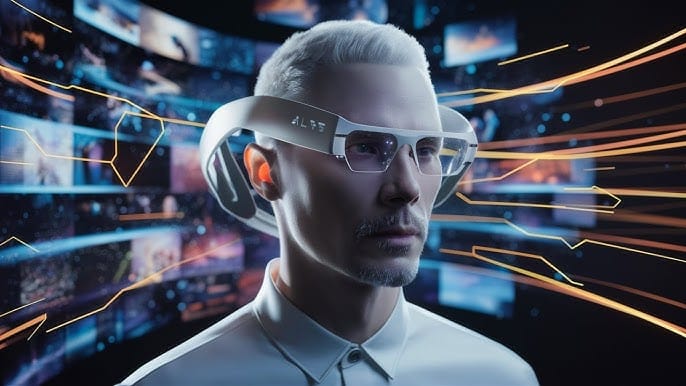Samsung’s Innovative Smart Glasses Patent Unveiled

Samsung Electronics is reportedly working on a new pair of wearable smart glasses that could redefine how users interact with multimedia. A recent patent filed with the US Patent and Trademark Office reveals exciting details about this innovative device. The smart glasses are designed to deliver augmented reality (AR) and virtual reality (VR) experiences, integrating advanced audio and visual technologies. This article explores the key features and potential applications of Samsung’s upcoming smart glasses.
Samsung’s Patent for Smart Glasses
The patent, first highlighted by 91Mobiles, outlines a head-mounted wearable device that aims to enhance user experiences through AR and VR. The glasses will utilize a portion of the user’s field of view (FoV) to overlay information directly onto real-world objects. This could include displaying images or text, making it easier for users to access information without diverting their attention from their surroundings.
The internal configuration of the smart glasses is quite sophisticated. According to the patent, the device will feature a light output module designed to project images. Additionally, it will include a speaker module protected by a conductive plate and a coil. This design aims to minimize magnetic interference, which can often disrupt audio quality. The patent also indicates that the smart glasses will have dedicated modules for managing audio, battery life, display, and other essential functions. This modular approach suggests that Samsung is prioritizing user experience and functionality in its design.
Addressing Audio and Power Challenges
One of the significant challenges in developing compact wearable devices is managing audio and power components in close proximity. When a power component and a speaker are situated near each other, noise interference can occur. Samsung’s patent addresses this issue by strategically placing part of the power transmission structure above the conductive plate, which overlaps with the speaker’s coil. This innovative arrangement aims to reduce the imbalance in the magnetic field, thereby minimizing interference-related noise.
The design also emphasizes the importance of sound quality in the user experience. The speaker is not just for notifications; it is intended for multimedia playback, allowing users to enjoy music, podcasts, or other audio content seamlessly. Furthermore, the inclusion of a receiver suggests that users will be able to take calls directly through the smart glasses, enhancing their functionality as a communication device.
Advanced Processing Capabilities
The patent reveals that Samsung’s smart glasses will be equipped with two processors: a primary CPU or application processor (AP) and an auxiliary processor. The auxiliary processor could serve various functions, potentially acting as a graphics processing unit (GPU), neural processing unit (NPU), image signal processor (ISP), or communication processor (CP). This dual-processor setup indicates that the smart glasses will be capable of handling complex tasks efficiently.
The auxiliary processor’s role is particularly intriguing. If it is implemented as an NPU, the device could harness artificial intelligence (AI) capabilities. This would enable the smart glasses to perform machine learning tasks, either on-device or via cloud servers. Such AI integration could enhance user interactions, allowing for personalized experiences and smarter functionalities. The potential for AI-driven features opens up a world of possibilities for applications in various fields, from gaming to education.
Future Implications and User Experience
Samsung’s patent for smart glasses hints at a future where wearable technology becomes an integral part of daily life. The combination of AR, VR, and AI capabilities could revolutionize how users engage with their environment. Imagine walking through a city while receiving real-time information about landmarks, or attending a virtual meeting where participants appear as holograms in your field of view. The potential applications for these smart glasses are vast. They could be used in education, allowing students to visualize complex concepts in real-time. In healthcare, doctors could access patient information hands-free while performing procedures. The entertainment industry could also benefit, with immersive gaming experiences that blend the virtual and real worlds.
Observer Voice is the one stop site for National, International news, Sports, Editor’s Choice, Art/culture contents, Quotes and much more. We also cover historical contents. Historical contents includes World History, Indian History, and what happened today. The website also covers Entertainment across the India and World.

